The OnePlus One Review
by Joshua Ho on November 19, 2014 8:00 AM EST- Posted in
- Smartphones
- Android
- Mobile
- OnePlus
Display
Within the past few years, smartphone displays have improved immensely. Color rendition, peak brightness, contrast, resolution, viewing angles, and power draw have all improved since the first modern smartphones that appeared in 2007. Of course, while it was once possible to judge relative quality in displays by subjective comparison, most smartphones no longer have TN displays or poor maximum brightness. In order to better test displays, we turn to SpectraCal’s CalMAN 5 with a custom workflow.

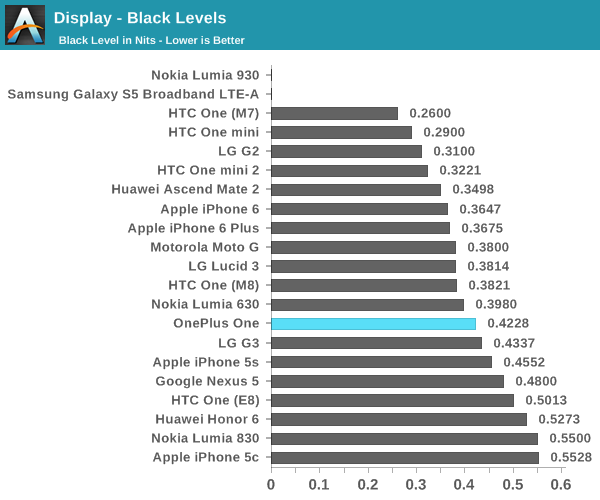
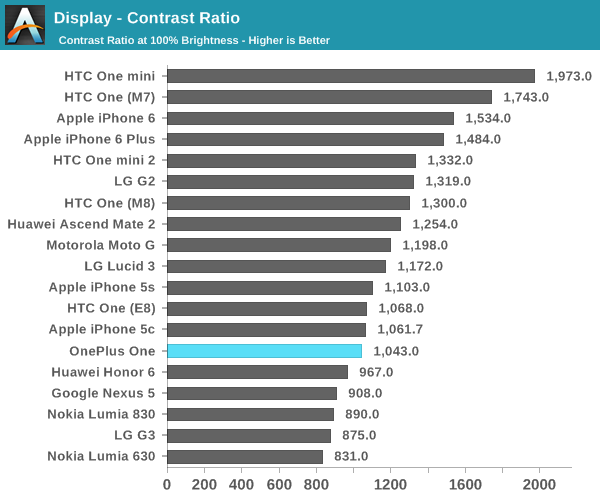
In the basics, we see that the OnePlus One has a reasonably bright display and acceptable display contrast, although there's room to improve in both. OnePlus has also done a good job of making sure that their display gets dim enough for night time reading, as minimum brightness is around 4.2 nits. Viewing angles are also great. While contrast with viewing angle changes isn't as good as AMOLED panels, I don't see any color shifting with viewing angle changes. This seems to remain an advantage of IPS panels for now.
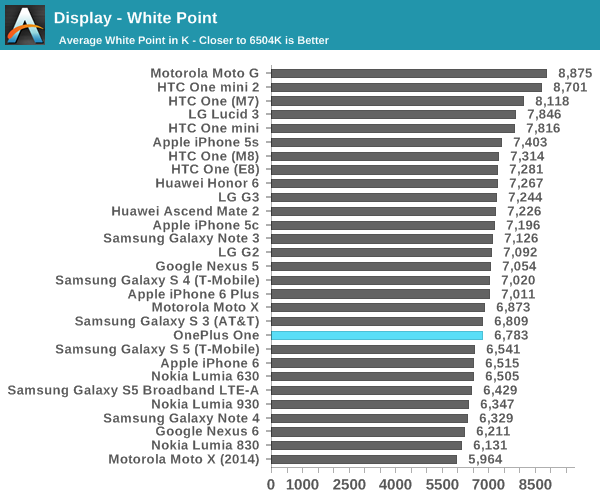
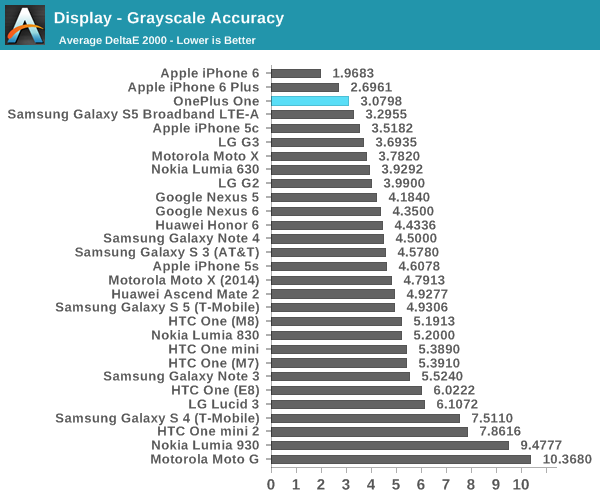
In grayscale, we see that the white balance is just a bit blue, but there really isn’t a big issue there. The OnePlus One sets a record for grayscale accuracy. I would like to see a bit better color balance at the higher scales, but it's really just nitpicking. Specifically, red needs to be bumped up to be in line with green and blue. It's understandable why this is done though, as the display's backlight will be the weakest in red in general.
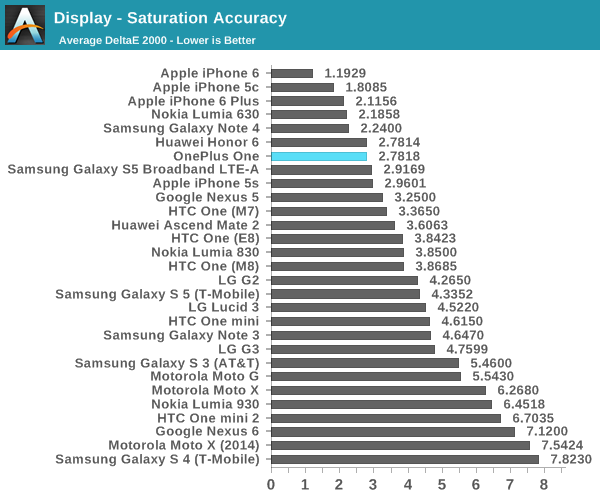
In the saturation sweep, OnePlus has done a great job to make sure that colors are as accurate as possible. The only issue here is that the red, magenta, and blue is a bit weaker than it should be. Some extra saturation would definitely tighten up the accuracy here in addition to making the display more appealing than it is now. However, the display is still incredibly well-calibrated, and will be more than accurate enough for general use.
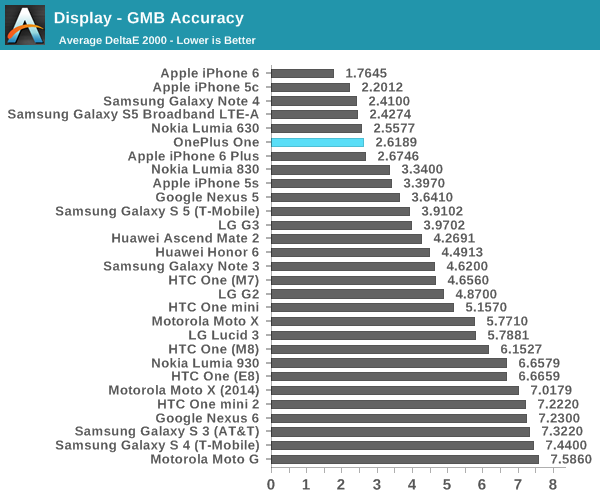
The strong showing in the saturation sweep helps carry the OnePlus One through to do well in the ColorChecker. For the most part, we see that much of the error comes from the issues previously discussed with grayscale. The display overall is great, and while it isn’t perfect, it’s really just nitpicking at this point. The OnePlus One manages to display colors more accurate than almost everything on the market. The only real issue I've noticed with this display is that there's a bit more IPS glow than I'd like when shifting viewing angles.


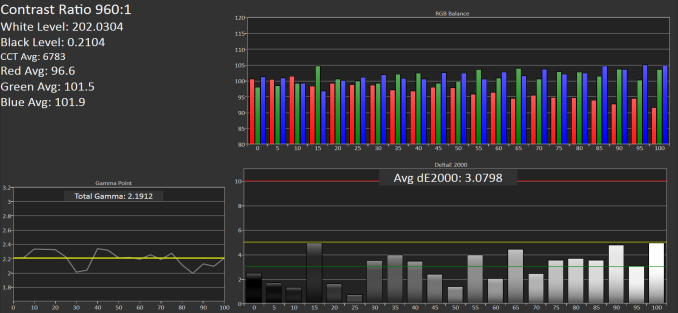
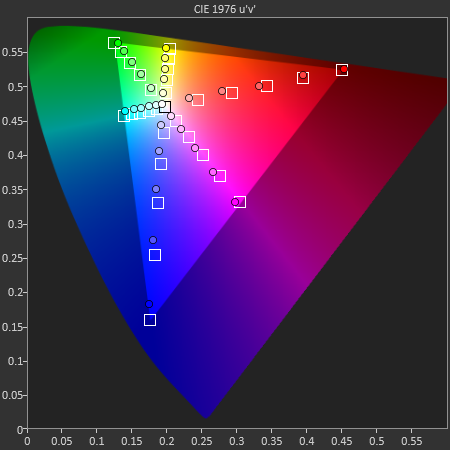
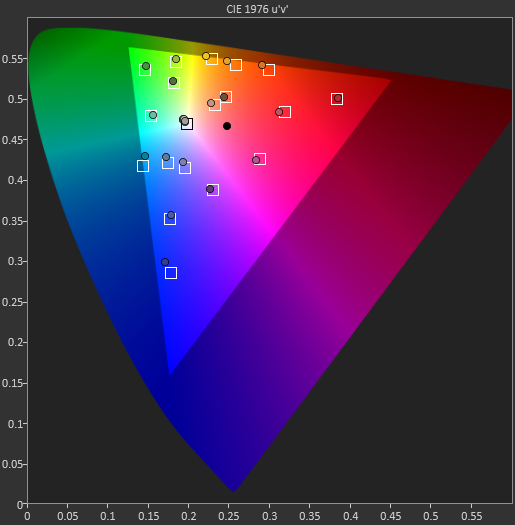








148 Comments
View All Comments
Iseek1 - Friday, November 21, 2014 - link
@Joshua Ho a lot of people are amazed / confused over the battery test results, the incredible high numbers for screen on time and battery life in general per these tests, would you possibly be able to go into more detail as to how these tests are done?dragospascu - Saturday, November 22, 2014 - link
glad that my irk with benchmarking in balance mode was addressed ; also the size "issue" :)i have it for 2 months now and can't let it rest.....my nexus 7 is full of dust :)
i just hope they'll manage to ramp up production so all other manufacturers will be forced to reconsider their profit margins. i think everybody should cheer them up :)
shainawilliams1992 - Saturday, November 22, 2014 - link
OnePlus One is now on sale only at http://tinyurl.com/mrq34ostheduckofdeath - Saturday, November 22, 2014 - link
" While contrast with viewing angle changes isn't as good as AMOLED panels, I don't see any color shifting with viewing angle changes. This seems to remain an advantage of IPS panels for now."You know you're reading a review on iAnandtech when the writers tries to find every little scrap to be able to pretend LCD is on par with AMOLED in 2014.
Socius - Saturday, November 22, 2014 - link
IPS displays are actually superior to amoled with the exception of black levels and contrast...theduckofdeath - Thursday, November 27, 2014 - link
The extreme difference in dynamic range (by a factor of 1000 to 1) makes the theoretical minute differences in "colour accuracy" that Anandtech WRONGLY finds in their comparisons, completely irrelevant.Anandtech's flawed tests has often been openly criticized by professional display testers as being inaccurate. For instance by Displaymate, which all manufacturers use to test and calibrate their displays.
AnnonymousCoward - Saturday, November 22, 2014 - link
The color white is still better on LCD than OLED. And OLED phosphors age.theduckofdeath - Thursday, November 27, 2014 - link
I have never, ever had any issues with aging of AMOLED displays. I really think you need to update your sources. The absolute first generation of OLED had aging issues. That was 6-7 years ago.LCD displays age and bleach, too. My old laptop (which is around 4 years) with an LCD has issues showing the difference in low contrast areas, which is a big problem with all these modern/material themed sites and apps these days.
AnnonymousCoward - Friday, November 28, 2014 - link
> you need to update your sourcesMy source is myself! My 2.5 year old Samsung phone has faint spots all over that are marginally visible when the whole screen is a dark color.
pliablemoosethebanned - Saturday, November 22, 2014 - link
I've had a couple of OPO's, and thought they were a great phone, particularly when you factor in the price.